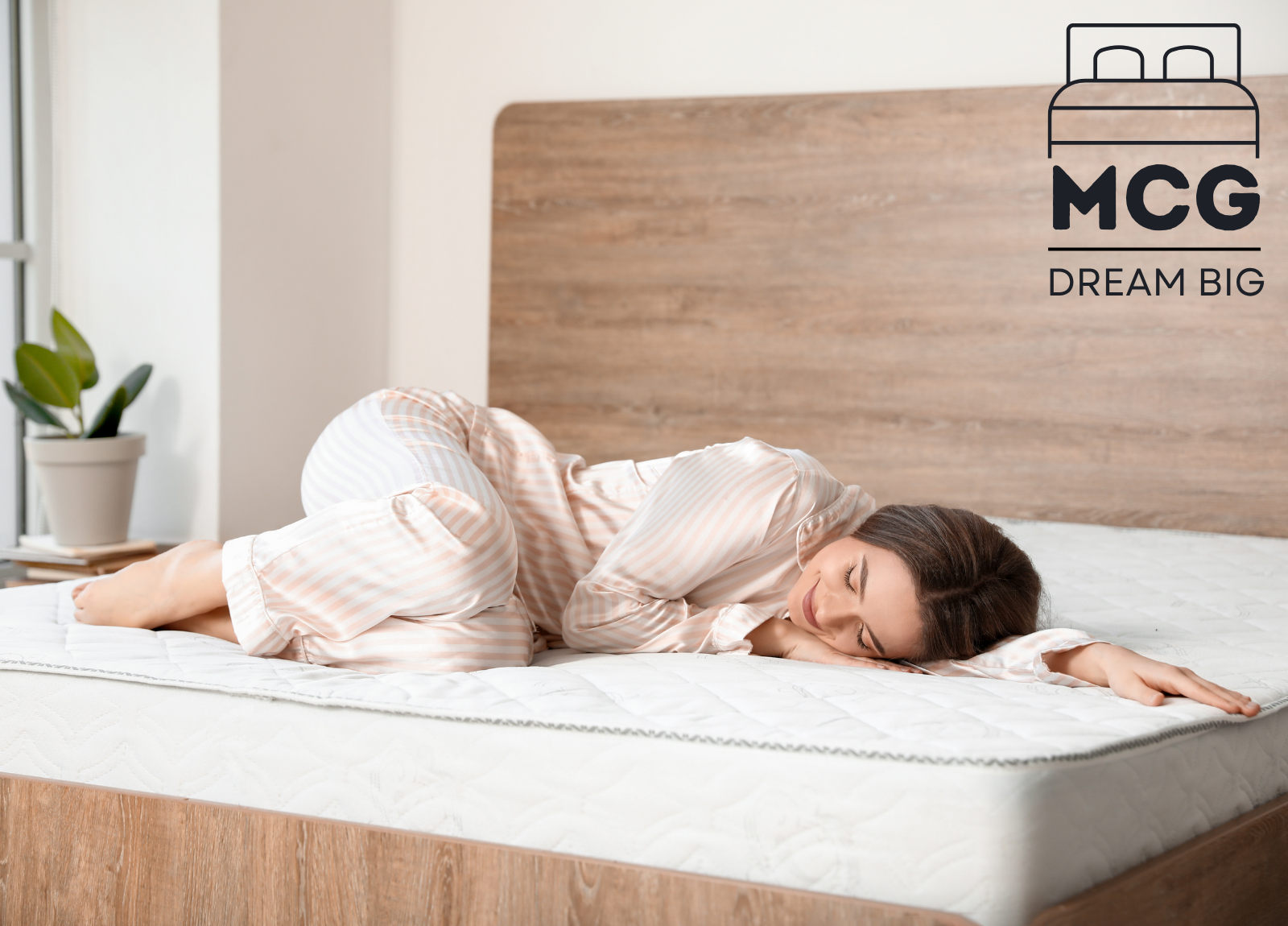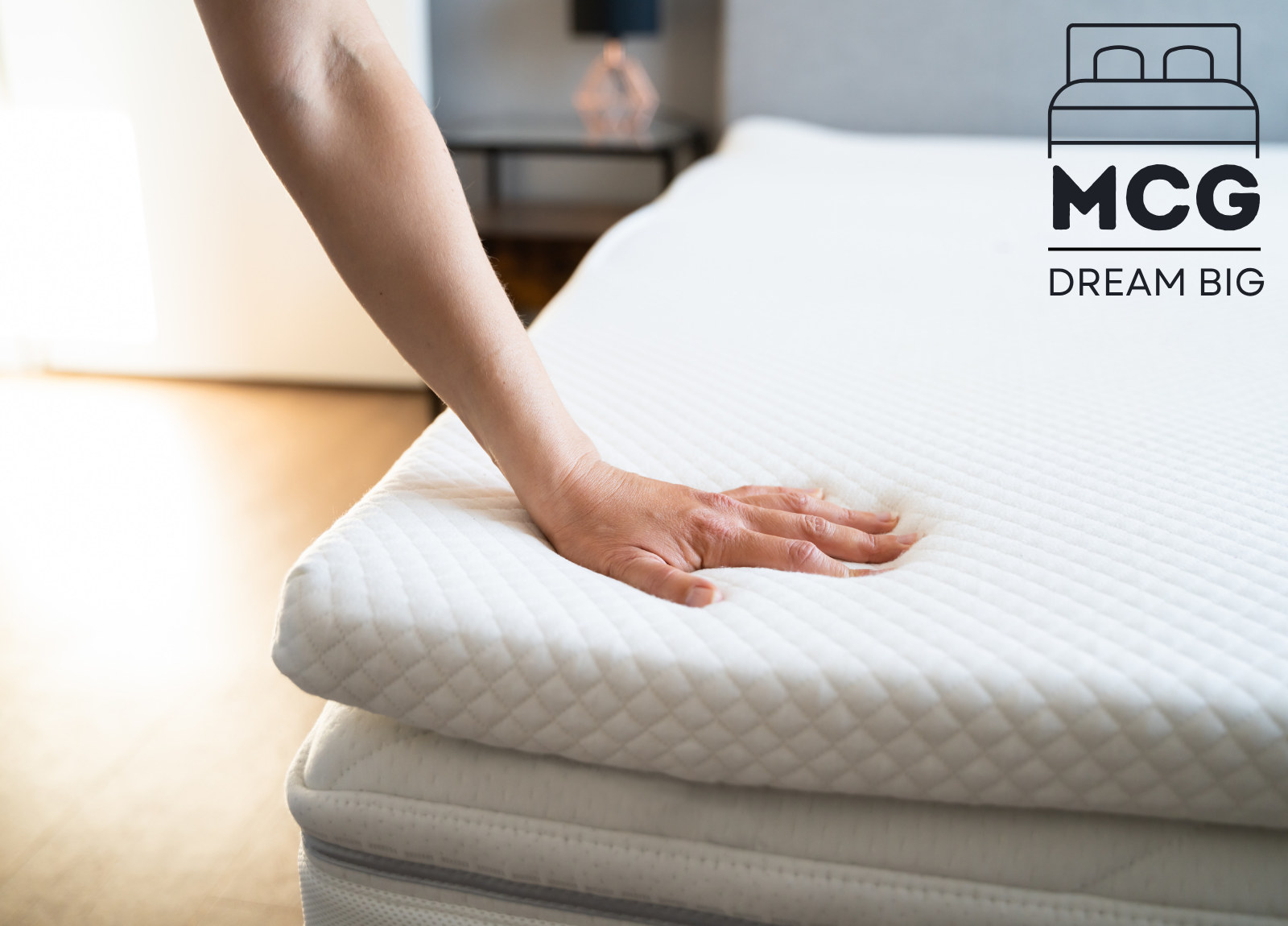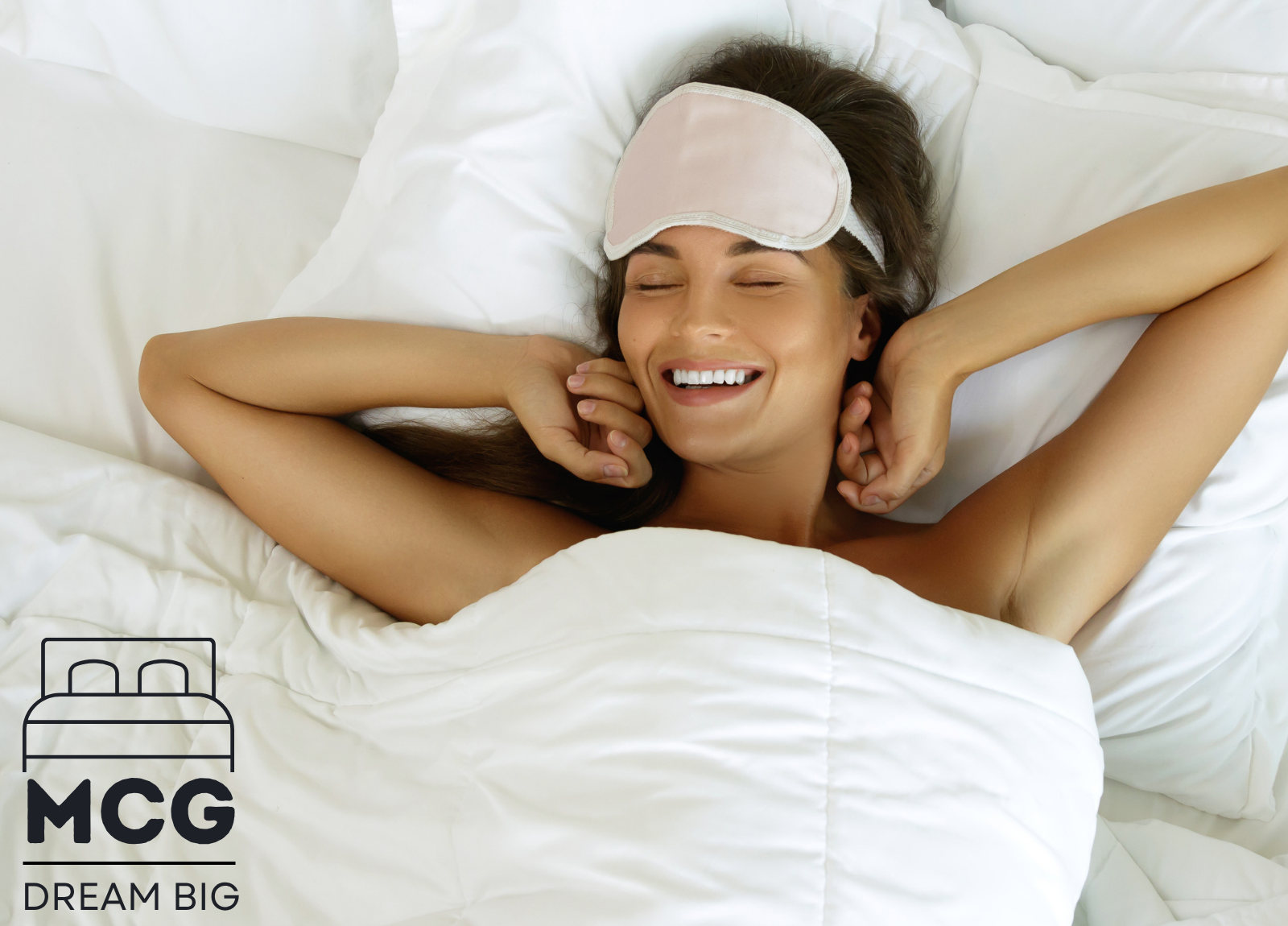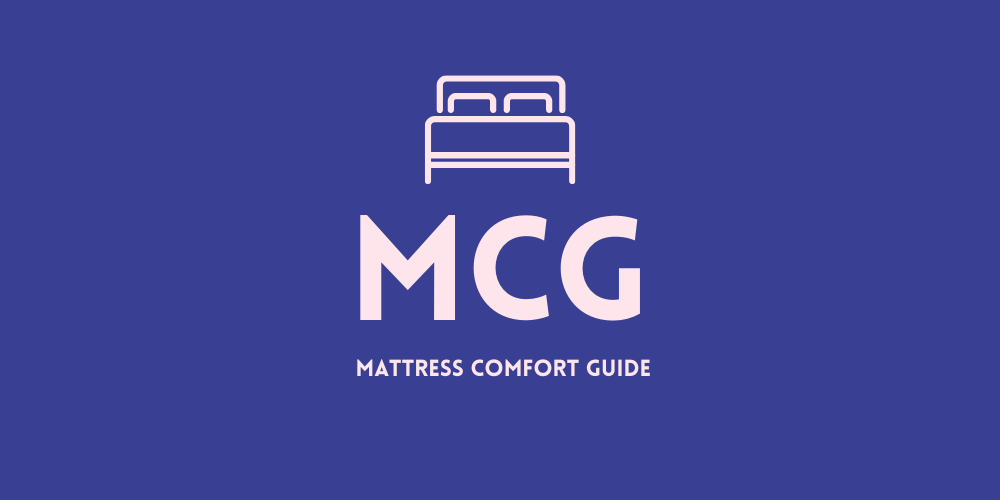
What are the pros and cons of a memory foam mattress? The main advantages of a memory foam mattress are its superb body-contouring comfort, soft cushioning, and incredible pressure relief. The main disadvantages are that they are heavy mattresses, can be expensive, and cheaper models tend to sleep hot.
PROS AND CONS OF MEMORY FOAM
Are you considering buying a new memory foam mattress? Check out this guide before you part with your hard-earned cash. We will take you through the pros and cons of memory foam and cover everything you need to know. What are the pros and cons of memory foam mattress?

Memory foam mattresses are incredibly comfortable. They offer a unique feel that delivers superb soft cushioning, gentle pressure relief, and comforting body contouring. They are one of the most popular mattress types across the globe.
But what are the benefits and disadvantages of a memory foam mattress? We cover in detail all the pros and cons you need to consider when deciding if this is the right mattress type for you – see below.
BENEFITS OF A MEMORY FOAM MATTRESS
What are the benefits of a memory foam mattress? What are the key features that have made these mattresses so popular? Let’s take a closer look at the pros of a memory foam mattress.
OUTSTANDING COMFORT
The biggest benefit of a memory foam mattress is its superb comfort. They deliver incredible soft cushioning support, unlike any other mattress type.
The material used to make a memory foam mattress has a unique viscoelastic property. This means it has a soft response that allows it to slowly bend and change shape when pressure is applied.
When you lie on a memory foam mattress it slowly bends to cradle your body and provide gentle cushioning support. This is what makes memory foam mattresses feel so incredibly comfortable.
PRESSURE RELIEF
Pressure relief is one of the most important memory foam mattress benefits. The foam provides excellent pressure relief to areas of the body that carry the most weight when you lie on the mattress.
The gentle cushioning of the foam disperses weight away from the pressure points of the knees, hips, and shoulders.

The foam responds to heat and pressure by slowly changing its shape. This means that in areas where more weight is being applied, for example the hips, the foam compresses and gives way. This has the effect of relieving excess pressure in these areas.
BACK & JOINT SUPPORT
Memory foam mattresses are a good choice for back and joint support. They help align your spine and back into a more natural position while you sleep. One of our favorite benefits of memory foam mattress.
When you sleep on a memory foam mattress your weight and body heat will allow the mattress to bend and conform to the shape of your body. This means your spine and back can rest in a more natural position – allowing for the curvature of your spine.
In contrast, a firm mattress that doesn’t change shape will have a flatter sleeping surface. It will be more difficult to achieve proper spinal alignment on a mattress of this type.
MOLDS TO BODY
A memory foam mattress will mold to the shape of your body. The viscoelastic properties of the foam allow it to change shape to slowly contour around your body while you sleep.
It is this gentle body molding ability that gives memory foam mattresses a ‘hugging’ feel. As your body gently sinks into the surface of the fabric it feels like the mattress is hugging you. The foam responds to pressure and heat by changing shape.
And, once the pressure is removed the foam returns to its original shape. So, when you get up in the morning your memory foam mattress will slowly return to its natural form. Your body impression will evaporate from the mattress surface.
MOTION ISOLATION
Motion isolation is a key player in the pros and cons of a memory foam mattress. And memory foam provides excellent motion isolation. This means the material absorbs movement rather than spreading it out across the mattress.
Movements made in one area of the bed are largely confined to that area. This is a great quality if you are sharing the bed with a restless partner.
Memory foam isolates movement. So, if your partner is tossing and turning on their side of the bed you will feel little movement on your side of the mattress.
READ NEXT
HYPOALLERGENIC
Memory foam mattresses are naturally hypoallergenic. This means they are less likely to cause an allergic reaction compared to other types of material. Their hypoallergenic nature is a feature that is often overlooked when discussing the pros and cons of a memory foam mattress.
Memory foam has a very dense structure. This makes it difficult for dust mites, molds, and other allergens to penetrate the foam structure. Keeping the number of nasty microbes in your mattress to a minimum is great news for people that suffer from allergies.
QUIET MATTRESS
The mattresses are made from a foam polymer – and contain no metal springs or moving parts. This means they are quiet mattresses and don’t make any noise.
Innerspring mattresses and many hybrids can become noisy over the years. As springs age they begin to rub up against each other and creak and strain.
You will not have this problem with memory foam. They will remain quiet throughout their lifespan. This is a great feature for light sleepers with noisy partners.
RELIEVES CHRONIC PAIN
Another benefit of memory foam is its potential to relieve chronic pain. There is evidence to suggest that the long-term use of a memory foam mattress can reduce chronic pain.
Memory foam mattresses have been used to reduce pain levels by people suffering from arthritis, back pain, and joint pain. This may be due to the ability of the foam to softly cushion your weight and relieve pressure on stress points such as the hips, shoulders, and knees.
FOAM ADVANCEMENTS
The material used to make memory foam has benefited from many advancements over the decades. Memory foam was first developed by NASA in the 1960s for use as a protective shock-absorbing layer for astronauts.
It wasn’t until the 1990s that it was first introduced as a mattress material. The properties of the foam polymer meant it was ideal for mattresses. And, over the years additional tweaks have been made to boost its performance levels.
For example, you can now get a gel-infused memory foam to help with the cooling effect. The gel moves heat away from the body while you sleep so that it doesn’t get trapped and you don’t feel too warm.
Nowadays memory foam mattresses are available in a range of firmness levels. The foam polymer can be tweaked to deliver soft, medium, and firm mattresses – so all body types and shapes are catered for.
RELIEVES RESPIRATORY PROBLEMS
One of the potential benefits of a memory foam mattress is its ability to relieve respiratory problems. The contouring support of the foam can help promote proper body alignment which may boost respiratory performance while you sleep.
And, the hypoallergenic nature of the material means you are less likely to suffer any allergic reactions. The dense foam structure makes it difficult for dust mites and other respiratory irritants from gathering in your mattress.
EASY TO BUY
Another advantage of memory foam mattress is they are incredibly easy to buy. They are not only well-stocked by high street dealers and mattress store specialists – but the online mattress-in-a-box market is awash with memory foam mattresses.
It’s never been easier to order a memory foam and have it delivered to your doorstep. With just a few minutes browsing on your phone you will be a few clicks away from placing an order.
EASY TO MAINTAIN
Easy maintenance is another great benefit of memory foam mattresses. There is very little you have to do to keep your mattress in top shape. The high density of the foam polymer means they are durable, long-lasting, and require very little TLC.
And, memory foam mattresses don’t need to be flipped – unlike other mattress types. You can keep it in one position without ever having to worry about lifting and repositioning. And, since they can be heavy this is an important feature.
COMPATIBLE WITH ADJUSTABLE BASE BEDS
Memory foam mattresses can be used with adjustable base beds. An adjustable base bed is a bed that has multiple hinge positions and can be adjusted to raise or lower sections.
For example, you can raise the top section of the bed for sitting up and reading a book or watching tv. They allow you to raise or lower sections of the bed independently from each other.
Memory foam mattresses work well with these adjustable bed frames. They have no metal frames and the foam can adjust its shape in line with the moveable bed frame. If you use an adjustable base bed – then a memory foam mattress will work well for you.
DISADVANTAGES OF MEMORY FOAM MATTRESS
What are the disadvantages of memory foam mattress? What are the cons you need to know about? Let’s take a look at memory foam mattress disadvantages so you can decide if it’s the right type of mattress for you.

THEY’RE HEAVY
There is no escaping the fact that memory foam mattresses are heavy. The foam polymer used to make them is dense and packs a considerable punch on the weighing scales. One of the more significant memory foam cons.
Their considerable weight regularly tops the list of disadvantages when discussing the pros and cons of a memory foam mattress. However, the good news is you’ll probably only need help getting them into position one time.
Once you have the mattress in place on your bed frame – that’s it. You never have to move it again. Unlike other mattresses, memory foams don’t have to be occasionally flipped. All you’ll have to worry about is changing the bedsheets.
QUALITY CAN VARY
The quality of memory foam mattresses varies greatly. Quality is key when covering memory foam mattress advantages and disadvantages.
Reputable manufacturers are producing excellent quality beds at reasonable prices. However, less reputable companies are getting in on the action. And, quality often takes a hit!
If you are in the market for a memory foam mattress – make sure you do your homework before parting with your cash. And, the golden rule of ‘you get what you pay for’ certainly applies when it comes to mattresses.
SLEEP HOT
For many years sleeping hot has been one of the most prominent memory foam mattress disadvantages. This was especially true in the early days when memory foam first hit the market.
The body contouring qualities of the foam mean that body heat can get trapped and accumulate during the night. The close hugging foam can act as a layer of insulation and lead to an uncomfortably hot experience.
While this may still be true for some cheaper models – technological advancements have relieved this problem. Memory foams now have materials added to conduct heat and move it away from the body.
If you are a hot sleeper, look out for gel-infused memory foam. This type of mattress has been designed to dissipate heat, moving it away from the body, and provide a cool night’s sleep.
CAN BE EXPENSIVE
Memory foam mattresses can be expensive, especially the high-end models. These mattresses are built to last and often include additional materials such as a cooling gel. If you’re on a budget a memory foam may not be the best choice.
But, as mentioned above – you get what you pay for. So, if your looking for a high-quality memory foam that will deliver many years of superb comfort you may be willing to invest.
OFF-GASSING
When you first unbox a new memory foam you will notice it gives off an odor. It is a chemical-like smell and it is caused by VOCs, volatile organic compounds, used to manufacture the foam.
This is however a completely normal process and is referred to as off-gassing. You will notice this can happen when you unbox any new product that contains foam or plastic.
While the odor is unpleasant, the good news is that it is a temporary inconvenience. The unwanted scent will pass after 2-3 days once you allow the mattress time to air.
CLOSE HUGGING FEEL
Some people dislike the close hugging feel of memory foam. While for some it is an advantage, for others it is one of the cons of memory foam mattress.
Memory foam will gently change shape to contour around your body. And as you sink into the mattress material it gives a gentle hugging feeling. If this is something you find uncomfortable, then a memory mattress may not be a good choice for you.
NOT WATERPROOF
In general, memory foam mattresses are very low maintenance. This is a point we’ve already covered in the pros and cons of a memory foam mattress. However, they are not waterproof.
This means you will have to take extra care not to spill any liquids on the mattress. Cleaning up spills on memory foam is difficult. And liquid can degrade the foam affecting its performance and reducing its life expectancy.
TAKES TIME TO ADJUST
New memory foam can take time to adjust to your body shape, size, and weight. And it can take a little time to adjust as you switch from one sleeping position to another. The foam polymer has a slow response rate which means it doesn’t mold to your body shape right away.
But don’t worry, just give it a little time. The pressure and heat from your body will trigger the viscoelastic properties of the foam and it will soon adjust its shape for optimal soft cushioning.
LACK SUPPORT
Some people feel that memory foam does not offer enough support for their body weight. Nowadays, memory foam mattresses are available in a range of firmness levels that will cater to the vast majority of support needs.
The higher the firmness level – the greater the level of support. However, heavy people may need something stronger. These individuals may do better with a firm mattress that also provides a high level of responsive movement.
If this is the case you need a firm mattress with plenty of bounce. The best mattress types in this category are innerspring mattresses, hybrid mattresses with spring cores, and firm latex mattresses.
FIRMNESS AFFECTED BY TEMPERATURE
The firmness of memory foam can be affected by the heat. While this will not have an impact on most people, if you live in an area of the world that experiences a very hot climate – you need to be aware of how it can affect a memory foam mattress.
When a memory foam mattress gets hot it affects its natural viscoelastic state – and the mattress becomes a little softer than normal. And the opposite is true for cold climates. If the mattress becomes particularly cold – it will feel firmer than it would at regular room temperature. Something worth considering when weighing up the pros and cons of foam mattress.
READ NEXT
• TOP 10 MOST COMFORTABLE MATTRESS
• HOW THICK SHOULD A MEMORY FOAM MATTRESS BE?
WHAT IS A MEMORY FOAM MATTRESS?
Memory foam mattresses are made using a special type of foam that gently cradles your body and relieves pressure. The mattress foam is made using a polymer that has characteristics that make it ideal for mattress production.

The foam slowly changes shape in response to heat and pressure. This means when you lie on a memory foam mattress it will slowly bend to contour around the shape of your body and gently cushion your weight.
It was first developed in the 1960s by NASA for use in its space rockets. The foam was used to protect astronauts during take-off and re-entry of the atmosphere. It wasn’t until the 1990s that it was first used as a mattress and bedding material.
For more information, check out – What Is A Memory Foam Mattress?
SHOULD I BUY A MEMORY FOAM MATTRESS?
Should you buy a memory foam mattress? Yes, a memory foam mattress is a great choice if you want incredible comfort, soft cradling comfort, and pressure relief for your hips, knees, and shoulders.
A memory foam mattress is an excellent long-term investment. And, if you do your research and buy a high-quality model you won’t be disappointed. In addition to their incredible comfort they are hypoallergenic, can help relieve pain and sore joints, and provide superb motion isolation.
They are a great choice for couples – as they are quiet and movement does not travel across the surface of the mattress. And, recent advancements such as gel infusion means they will keep you cool during the night.
On the other hand, they may not be the best choice for particularly heavy individuals. If you require substantial support and considerable responsive movement – a firm innerspring or hybrid mattress may work better.
WHAT OTHER TYPES OF MATTRESS ARE THERE?
When discussing the pros and cons of a memory foam mattress we need to consider the other types of mattress on the market. They are innerspring, hybrid, latex, and polyfoam. Other less common types of mattress include air, water, and organic mattresses.

INNERSPRING MATTRESS
Most traditional mattresses are innerspring mattresses. They use a spring core to provide bounce and support. The springs are topped with a small comfort layer made from cotton or foam.
They provide excellent responsive movement thanks to the springs and are available in a range of firmness levels. The spring core facilitates airflow which promotes a cool night’s sleep.
HYBRID MATTRESS
A hybrid mattress is a mattress that uses more than one technology. The most popular example is a hybrid that uses springs and memory foam. These mattresses are built with a spring core and with a generous layer of memory foam on top.
They combine different material technologies to create new mattresses with blended features and unique characteristics. The spring core delivers superb responsive movement while the foam comfort layer provides soft cushioning comfort.
In recent years hybrid mattresses have become incredibly popular. For more information check out – What Is a Hybrid Mattress?
LATEX MATTRESS
Latex mattresses are made using latex foam. Also known as natural rubber – latex is a natural substance obtained from the rubber tree. It is whipped up into a foam to produce latex mattresses. These mattresses have a unique feel – combining soft comforting cushioning with a springy bounce.
There are two types of natural latex mattress on the market – Dunlop and Talalay. And, then there are synthetic and blended models. Synthetic mattresses do not use any natural latex.
Instead, they use a man-made petrochemical substance that mimics the characteristics of latex. They are a budget option. Blended latex mattresses use a combination of natural and synthetic latex. For more information check out – What Is a Latex Mattress?
POLYFOAM
What about a polyfoam mattress? This is a question that pops up regularly when discussing the pros and cons of a memory foam mattress.
Polyfoam mattresses are similar to memory foam. However, they use a different type of material called polyurethane or PU foam. They are cheaper to make and are more widely available.
They deliver many of the same characteristics of memory foam such as soft cushioning, slow response, and pressure relief. However, they vary in quality, can sleep hot, and are generally not as durable or comfortable as a memory foam mattress.
RELATED
How to Clean a Memory Foam Mattress
FREQUENTLY ASKED QUESTIONS
Below we answer the frequently asked questions we get on the pros and cons of a memory foam mattress.

WHAT IS THE LIFE EXPECTANCY OF A MEMORY FOAM MATTRESS?
Memory foam mattresses last for 20 years. The foam material used to make the mattresses is highly durable. Premium models are known to last even longer – up to 25 years. Their long life expectancy makes them an excellent long-term investment.
WHICH IS BETTER A REGULAR MATTRESS OR A MEMORY FOAM MATTRESS?
The mattress that is best for you is the one that best meets your individual needs. When people use the term ‘regular mattress’ they are usually referring to an innerspring mattress. Spring mattresses have a lot of bounce and deliver excellent responsive movement.
Memory foams instead deliver motion isolation – the opposite of bounce. Both types are available in a range of firmness options and comfort levels. If you need a mattress with lots of traditional bounce you may prefer a regular mattress.
CAN YOU FLIP A MEMORY FOAM MATTRESS?
No, you shouldn’t flip a memory foam mattress. They are designed to remain in the same position from day 1 right through until the end of their life cycle. And, memory foam mattresses are heavy so you should avoid any unnecessary flipping and repositioning.
WHY MEMORY FOAM MATTRESS ARE GOOD?
Memory foam mattresses are good because they contour to your body, relieve pressure points, provide support, and minimize motion transfer for a comfortable and restful night’s sleep.
READ NEXT
PROS & CONS OF HYBRID MATTRESS
PROS & CONS OF A LATEX MATTRESS
ABOUT THE AUTHOR
SARAH FOY – Mattress Expert
Sarah joined the MCG team in the summer of 2021. She is our in-house foam mattress expert. Whether it’s memory foam, latex foam, or straightforward polyfoam – she has you covered. Sarah has a particular passion for the unique body contouring effects and soft cradling support of latex and memory foam mattresses.
She has over 15 years of experience in the bedding, furniture, and textile industries. Sarah is a native of Arizona where she graduated from Northern Arizona University in the mid-noughties. When she’s not in the office she likes to tend to her apple tree orchard in Flagstaff where she lives with her husband and two daughters.
